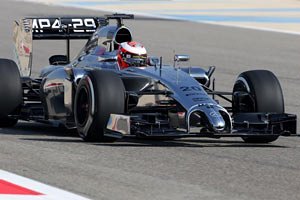I don't see anybody copying this until atleast after 5 races. Teams probably can't be bothered with it at the moment because they need to evaluate coming aero packages, a massive task on its own, and when the season starts they are stuck with their current suspension geometry because the pick up points are fixed in gearboxes they are only allowed to change once every 5 races. Maybe a driver gets bad luck with his current gearbox, forcing the team to change and taking the penalty anyway, so they could switch earlier to a spec that supports the mclaren suspension, but even then it still requires a newly tested rear crash structure.
The task more or less compares to what Newey faced in 2009 when he suddenly had to accomondate a DDD. It took him until Monaco to get the job done. And that was a upgrade with very obvious advantages; this mushroom suspension is less an obvious benefit.
- Login or Register
No account yet? Sign up



